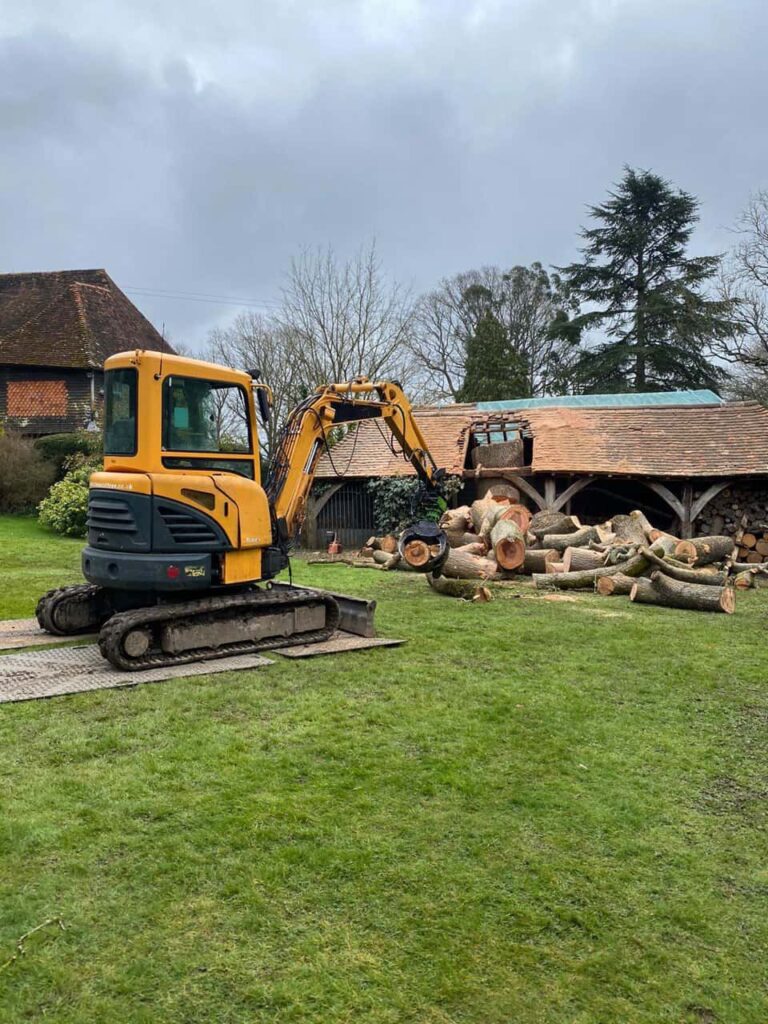Introduction: Tree pruning is a crucial aspect of tree care that, when done correctly, promotes healthy growth, improves aesthetics, and enhances safety. However, it’s important to remember that improper pruning can lead to damage, disease, and even tree death. In this blog post, presented by Sudbury Tree Surgeons, we’ll explore some of the most common mistakes people make when pruning trees and provide valuable tips on how to avoid them.
1. Over-Pruning
Over-pruning, often referred to as “topping” or “hat-racking,” is a harmful practice that indiscriminately cuts off large sections of a tree’s canopy. This weakens the tree’s structure, reduces its ability to produce energy through photosynthesis, and increases disease risk. Instead, opt for selective pruning that targets specific branches or areas.
2. Pruning at the Wrong Time
Pruning at the wrong time of year can stress a tree and leave it vulnerable to disease and pests. While some trees can be pruned year-round, it’s generally best to avoid major pruning during the active growing season. When trees are dormant, late winter or early spring is often the ideal time for most pruning tasks.
3. Neglecting Proper Tools
Using improper or dull pruning tools can lead to jagged cuts and damage to the tree. Investing in high-quality pruning shears, loppers, and saws designed for tree work is essential. Keeping your tools sharp will ensure clean cuts and minimise stress on the tree.
4. Topping or Lopping
Topping or lopping, which involves cutting off the upper portion of a tree’s main trunk or branches, is harmful and should be avoided. It disfigures the tree and leads to excessive sprouting of weak, fast-growing shoots. Instead, use proper crown reduction techniques to achieve your pruning goals without harming the tree.
5. Leaving Stub Branches
Leaving stub branches, which are short sections of branches that remain after pruning cuts, can invite disease and pests. Always make pruning cuts just outside the branch collar, the slightly raised area where the branch attaches to the trunk. This allows for proper healing and reduces the risk of complications.
6. Removing Too Many Lower Branches
Removing too many lower branches, known as “lion-tailing,” can expose the tree’s trunk to excessive sunlight, leading to sunburn and bark damage. These lower branches support the tree’s structure and should only be pruned if necessary.
7. Ignoring Safety Measures
Safety should always be a top priority when pruning trees. Neglecting safety gear, like helmets, gloves, and eye protection, can lead to accidents. Additionally, if you’re unsure how to prune a tree safely, it’s best to consult a professional tree surgeon to avoid potential risks.
Conclusion: Pruning trees is a skill that requires knowledge and care. Avoiding common pruning mistakes is essential for maintaining your trees’ health, beauty, and longevity. If you have concerns about pruning or are unsure about the best approach for your trees, consider seeking the expertise of professionals like Sudbury Tree Surgeons. Proper pruning practices will keep your trees thriving and enhance the overall beauty of your landscape while minimising potential risks.
Call us on: 01787 322 388
Click here to find out more about Sudbury Tree Surgeons
Click here to complete our contact form and see how we can help with your tree’s needs.

